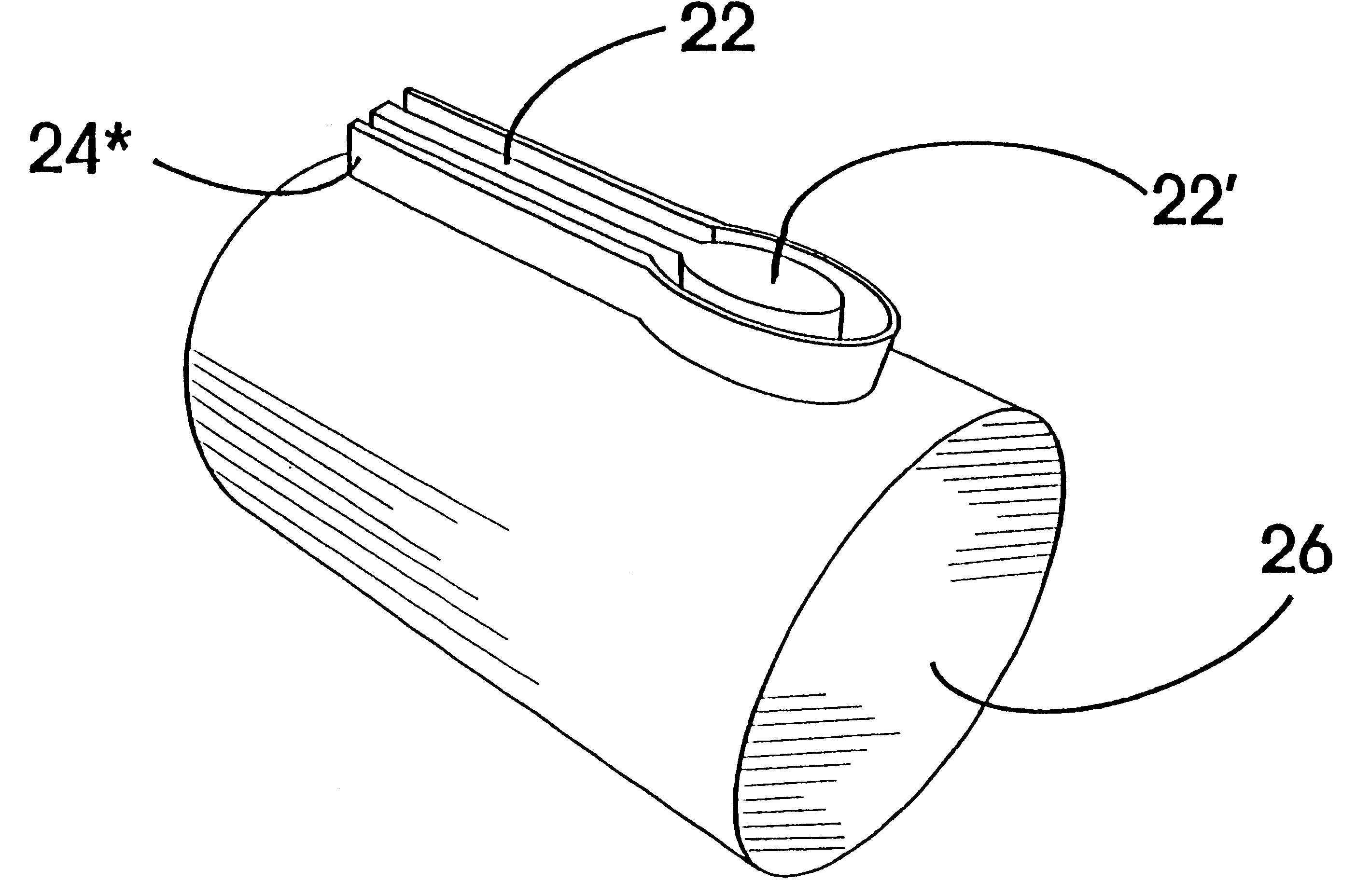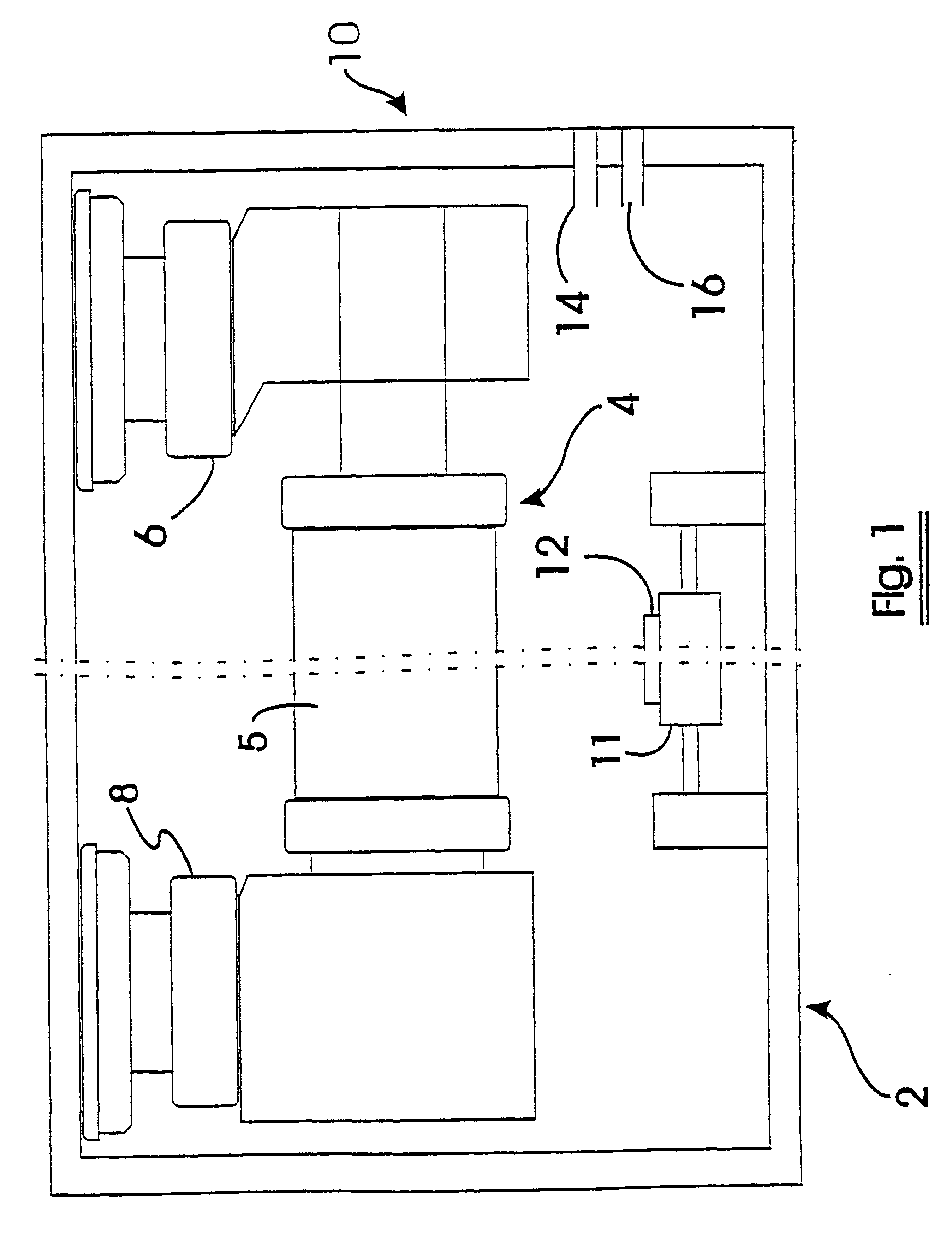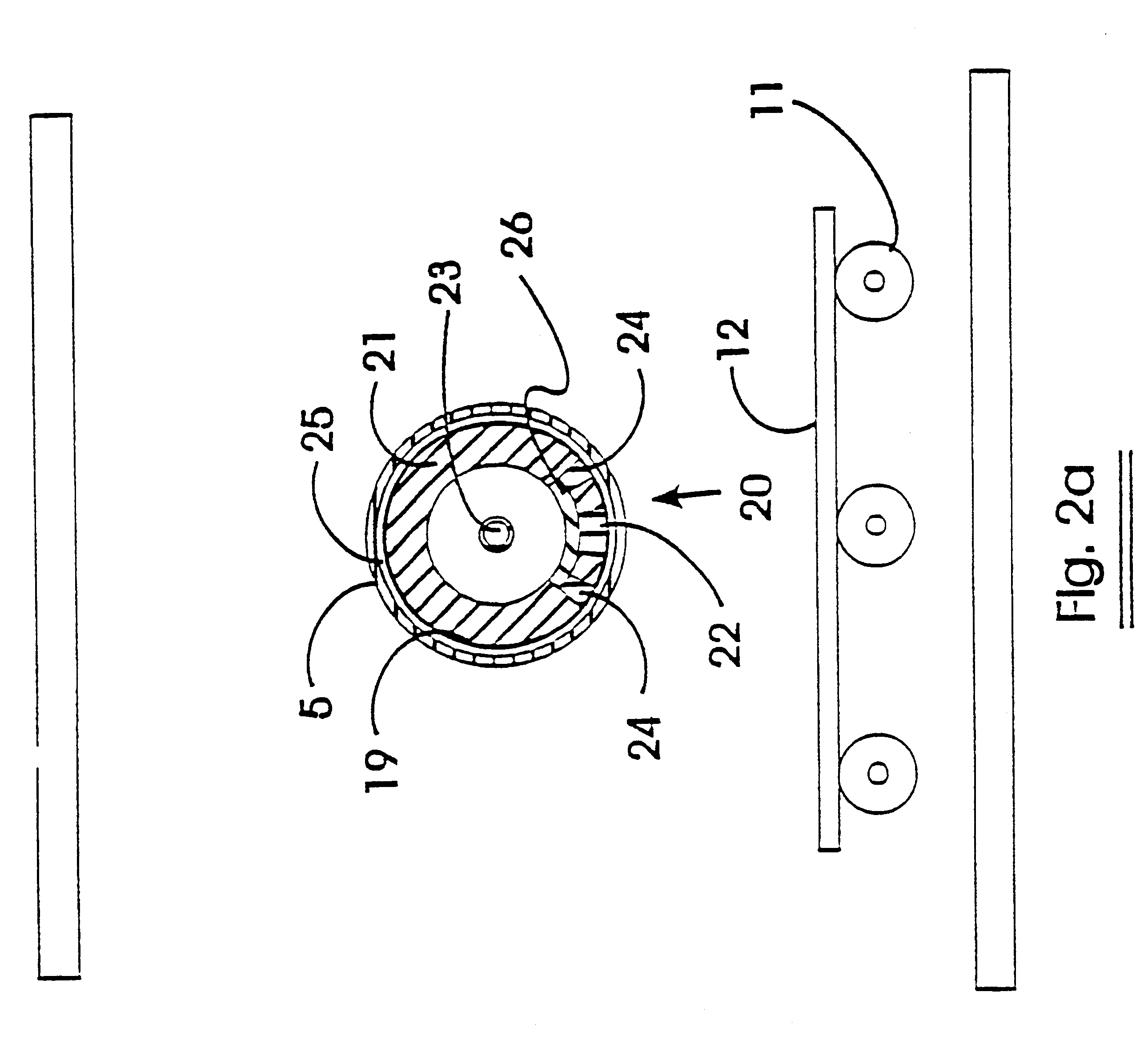Magnetron with parallel race track and modified end portions thereof
a technology of parallel race track and end portion, which is applied in the direction of electrodes, diaphragms, ion implantation coatings, etc., can solve the problems of additional problems such as arcing and plasma instability, sputtered surface contamination by shield material flakes, and costly process
- Summary
- Abstract
- Description
- Claims
- Application Information
AI Technical Summary
Benefits of technology
Problems solved by technology
Method used
Image
Examples
Embodiment Construction
The present invention will be described with respect to particular embodiments and with reference to certain drawings but the invention is not limited thereto but only by the claims. The drawings described are only schematic and are non-limiting.
FIGS. 1 and 2a and 2b are schematic views of the sputtering magnetron 10 in accordance with the present invention. FIG. 1 is a schematic side view of the target 4 within the vacuum chamber 2, whereas FIG. 2a is a schematic cross-sectional view through the target 4. FIG. 2b is an enlarged view of a part of the target 4 from FIG. 2a. Vacuum chamber 2 preferably includes a removable, cylindrical rotating target 4. The target 4 may be driven by any suitable drive means, e.g. an electric or hydraulic motor or similar linked to the target 4 through a feed-through 6. The other end of the target 4 may be supported by a further feed-through 8 through which cooling liquid for the target 4 and an electrical supply (not shown) may be brought into chambe...
PUM
| Property | Measurement | Unit |
|---|---|---|
| Fraction | aaaaa | aaaaa |
| Fraction | aaaaa | aaaaa |
| Length | aaaaa | aaaaa |
Abstract
Description
Claims
Application Information
 Login to View More
Login to View More - R&D
- Intellectual Property
- Life Sciences
- Materials
- Tech Scout
- Unparalleled Data Quality
- Higher Quality Content
- 60% Fewer Hallucinations
Browse by: Latest US Patents, China's latest patents, Technical Efficacy Thesaurus, Application Domain, Technology Topic, Popular Technical Reports.
© 2025 PatSnap. All rights reserved.Legal|Privacy policy|Modern Slavery Act Transparency Statement|Sitemap|About US| Contact US: help@patsnap.com



